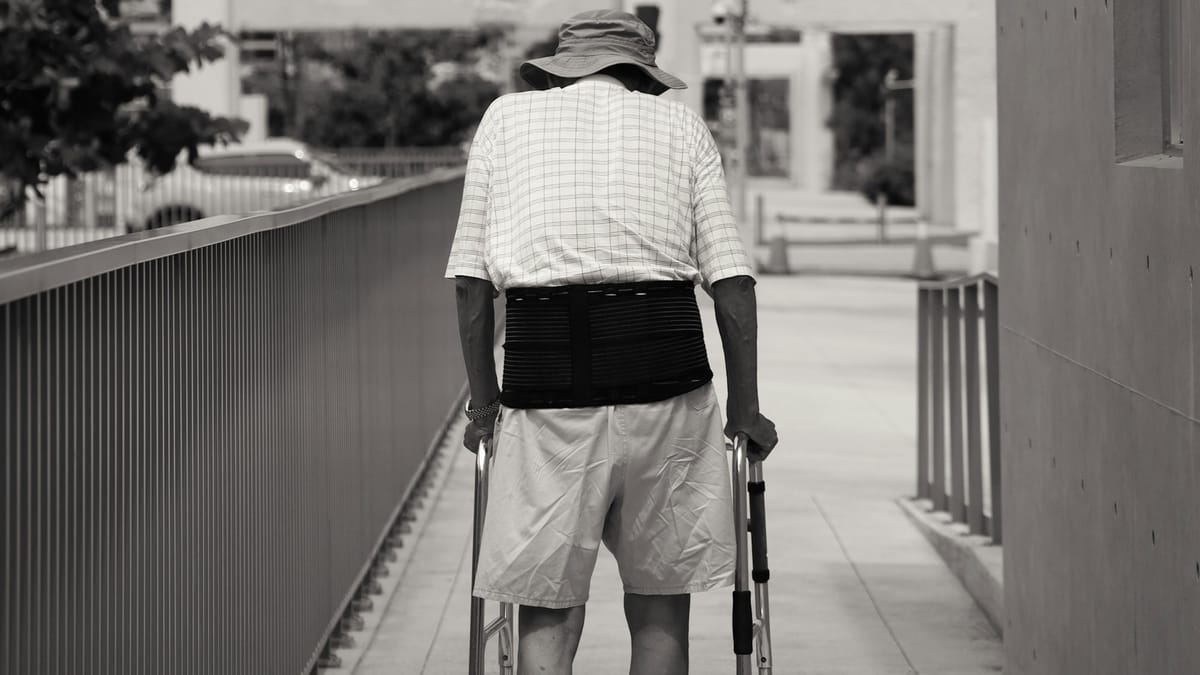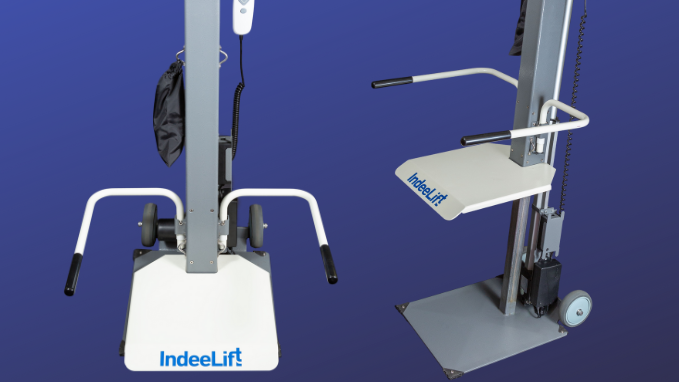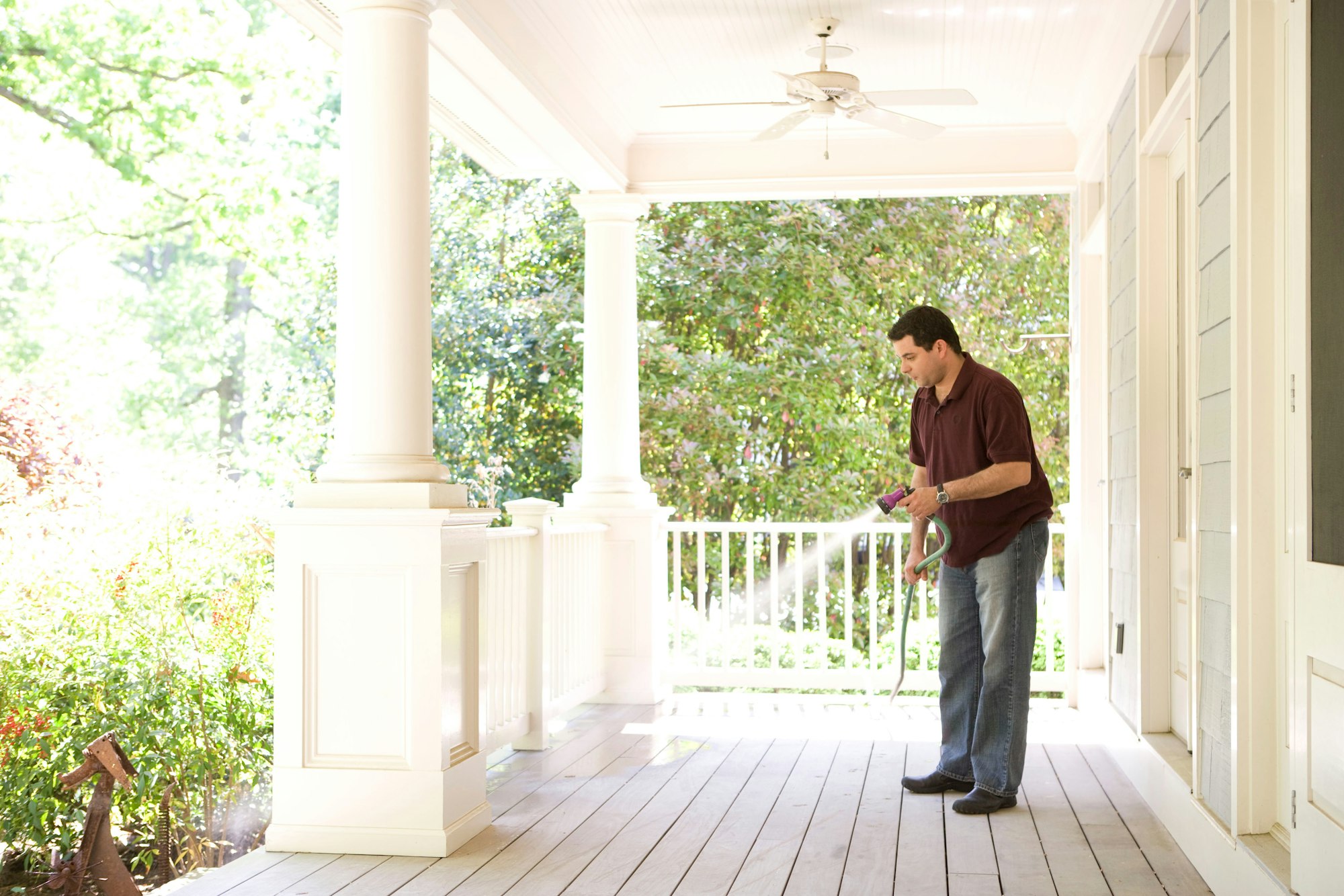Do Walkers Contribute to Fall Prevention?
an walkers help prevent falls? Explore how the right walker, when properly used, can provide stability and reduce fall risk for seniors. Learn the benefits, limitations, and tips for selecting the best walker to promote mobility and safety for your loved one or yourself.

More on Fall Prevention and Fall Recovery
Falls can be one of the most dangerous accidents that can happen during day-to-day life, especially for elderly and mobility-challenged people, often leading to broken bones and other serious injuries. According to the Centers for Disease Control and Prevention (CDC), falls are the leading cause of death among people over 65 and can result in long hospital stays and permanent disability. Walkers are an excellent tool for preventing falls by providing increased stability and balance for those who have limited mobility. Whether for short-term or long-term use, walkers provide support and can help the elderly or anyone with a mobility impairment manage their daily activities more safely and confidently.
In this guide, we’ll discuss the different types of walkers available, the benefits of using a walker to prevent falls, how to choose the right walker for you, potential complications when using a walker, and how to maintain a walker to ensure it works effectively. We will also look at the various advantages and disadvantages of using a walker to prevent falls in elderly persons and discuss the importance of utilizing walkers in order to avoid falls.
Different Types of Walkers
Walkers are an important tool for elderly people who want to maintain their independence and reduce the risk of falls. But not all walkers are created equal, there are a few choices of walkers out there which can help you find the best one for you.
The most basic type of walker is the standard walker. It has four posts with rubber tips on each end, and two handles in the center. This type of walker offers good stability and is easy to maneuver. It is also lightweight and folds up for easy storage.
The next type of walker is the rolling walker. This type has four casters at the bottom and two handles at the top. It is easier to push than a standard walker and requires less arm strength to get around. Rolling walkers also come in bariatric models which offer more support to those who are heavier.
The third type of walker is the rolling walker with a seat. This type of walker looks like a standard rolling walker but it comes with a built-in seat. This allows the user to take a break without having to search for a chair. It also offers more stability than a standard rolling walker as the extra support helps users move around easier.
The last type of walker is the gait trainer. The gait trainer is used to help those that need extra assistance with balance and mobility. It is designed to help users navigate more difficult terrain with its two handles and four casters. Gait trainers also come with adjustable height settings to accommodate users of different heights.
All of these types of walkers provide different levels of assistance and support. When selecting a walker, it is important to consider your needs and pick the walker type that best suits them. Consulting with an occupational therapist can also help you choose the right walker for your needs.

Benefits of Using a Walker
Using a walker has a number of benefits that can help with independence, security, and avoiding falls. A walker can provide improved support and stability when walking, helping to minimize the risk of falls, especially for people who experience reduced mobility or balance issues due to advancing age, physical disability, or neurological conditions.
Incorporating a consistent exercise routine can significantly improve strength, balance, and overall mobility, which are crucial for reducing the risk of falls.
The use of a walker also enhances balance and coordination, allowing users to more easily stand up and sit down with greater ease. This helps to decrease the risk of muscle strain and fatigue, while improving the overall safety of movement.
Walkers can also reduce the fear of falling by providing the confidence of extra support around the home. This stability helps to calm anxiety and increase a person’s sense of independence. Walkers are lightweight and easy to maneuver, meaning they can be used in any room of the house, or even outdoors.
For many people using a walker can mean the difference between being able to stay in their own home or having to move into a care facility. Being able to remain independent and self-sufficient can have powerful positive effects on health, happiness and quality of life.
Do Walkers Prevent Falls?
The use of a walker is an invaluable tool for people who have limited mobility or balance issues. It is important to understand the extent of the relief they can provide, and whether or not they are effective in preventing falls.
Walkers can help with a number of fall-related injuries by increasing a person’s stability and providing support when walking. This can reduce the risk of slips and trips due to loss of balance. It can also provide extra leverage if the person loses their balance and needs something to hold onto.
Research studies suggest that using a walker significantly reduces the risk of falls in elderly people. One study found that using a walker significantly reduced the risk of falls compared to not using one. The study also showed that walkers could reduce the rate of fractures due to falls. Another study found that participants with low balance scores had a greater reduction in fall risk when using a walker.
These studies demonstrate that the use of a walker can be an effective way to reduce the risk of falls and related injuries. It can provide both physical and psychological support to those who need help with mobility, ultimately helping to prevent future falls.
Choosing the Right Walker for You with a Physical Therapist
It is vital to ensure you select the right type of walker that is suited to your needs. When selecting a walker there are several critical considerations to make:
- Style: Consider if you need a standard walker or a rolling walker. Standard walkers are typically less expensive, more lightweight but provide less support. Rolling walkers are more stable and easier to maneuver but may be more expensive.
- Size: Make sure you get a walker that fits you properly. Walkers should ideally reach up to around your hip level and support your weight without being overly heavy or straining your arms.
- Quality: Buy the best quality walker you can afford as it will be more durable and reliable when you need it.
- Accessories: Consider what accessories you may need – such as baskets, braking systems, or armrests – to make the most of your walker.
These considerations should help you find the right walker for your individual needs and circumstances. Remember to consult with your healthcare provider before purchasing a walker – they may have helpful advice or even provide you with recommendations of specific models that may be best suited to you. Additionally, identifying and eliminating potential fall hazards in your home is crucial to ensure the safe use of your walker.
Benefits of Utilizing a Walker to Prevent Falls in Older Adults
For older adults, the chance of falling increases with age. This is due to weakening muscles and bones, as well as conditions such as arthritis, Parkinson’s Disease and dementia.
Using a walker can help reduce the risk of falls in older adults. Walkers provide extra stability and allow for better balance and support when walking. This helps older adults stay more independent and feel safer while navigating their environment.
Using a walker also provides other benefits. It prevents the need to rely on others for assistance, which can be a source of embarrassment for some older adults. Additionally, it can also help with pain relief, as it takes stress off of joints and muscles that are weakened by age.
According to a study published in the Journal of the American Geriatrics Society, the use of a walker resulted in a 66 percent reduction in falls among participating older adults. The study followed over two thousand older adults for several years and found that those who used a walker had fewer falls than those who did not.
By utilizing a walker, older adults can gain back some of the independence they may have lost. It can help them feel safer and more secure while out and about, and reduce their overall risk of falling.
Pros & Cons of Using a Walker for Fall Prevention
Using a walker can help reduce the risk of falls, but it also has some drawbacks to consider. Let’s take a look at the advantages and disadvantages of using a walker for fall prevention.
Using a walker can help prevent serious injury from falls, particularly among older adults, by providing additional support and stability.
Advantages
- Increased stability and balance – a walker can provide improved support when walking compared to relying solely on one's own balance, making it easier to remain upright.
- Independence – with improved balance comes improved independence – a walker helps one have the confidence to move around on their own without fearing falling.
- Cost – walkers are relatively inexpensive compared to other mobility aids, making them a cost effective way to improve mobility.
- Portability – walkers are lightweight and easy to fold, making them easy to transport from place to place.
- Self-esteem – with increased stability and mobility comes improved self-confidence, as one can move around without worrying about falling.
Disadvantages
- Bending over to use a walker can be tiring or difficult for some users, particularly those with existing back or leg problems.
- Folding a walker can be a challenge for people with limited dexterity in their hands.
- Certain tasks can be difficult, such as going up and down stairs or navigating narrow spaces.
- The cost of buying a walker can add up, when factoring in replacement parts, repairs, and accessories.
Potential Fall Hazards and Complications
Using a walker to assist with mobility and prevent falls comes with its own set of potential risks. These can include slips, trips, and falls from the walker, pressure sores, and other issues. It is essential to understand these risks and ways to mitigate them in order to make sure you are safe and secure when using a walker. Identifying and addressing risk factors through regular medical assessments can help reduce the potential complications of using a walker.
Slips, Trips and Falls
One of the potential risks of using a walker is that you could slip, trip, or fall due to the walker being unstable or not used properly. Even a minor fall can lead to debilitating injuries, increased risk of long-term disability, and even death, underscoring the importance of fall prevention strategies and bone health maintenance. In order to reduce this risk, it’s important to take your time when using the walker and make sure it is properly adjusted for your height and weight. You should also check that the walker is on level ground before you use it, and be mindful of any obstacles or uneven surfaces that might make using the walker difficult.
Pressure Sores
When using a walker, it is possible to develop pressure sores over time due to the friction caused by leaning against the walker. To reduce the chances of developing pressure sores, it's important to adjust the height of the walker so it fits your body correctly, and make sure the handles are at the correct height. Additionally, you should take regular breaks when using the walker and shift your weight frequently.
Strains and Sprains
When using a walker, it is important to use it correctly and within your physical limits. Using your walker incorrectly or trying to go beyond your own physical capabilities could lead to straining your muscles and ligaments, which could lead to pain and injury. In order to avoid this, make sure your walker is correctly adjusted to your height and weight, and that you do not overexert yourself.
Conclusion
Using a walker correctly and safely is essential in order to reduce the risk of falls and other potential complications. To ensure your walker is helping you in the best way possible, always adjust the height and handles correctly, take frequent breaks, and be aware of any uneven or slippery surfaces that could cause you to fall.
Walker Maintenance - Keeping Your Walker in Prime Condition
The maintenance of your walker is of utmost importance to ensure it works effectively and safely when you need it. By following these simple steps, you can keep your walker in prime condition for many years to come.
These maintenance guidelines are based on recommendations from the National Institute of Health.
Check for Wear and Tear
Before using your walker, it is important to check for any damage, including wear and tear. If there are any loose screws, bolts, or nuts, tighten them at once. If any of the components appear to be damaged, replace them with new parts.
Clean Regularly
Ensure you clean your walker regularly to remove dirt, grime and dust that may accumulate over time. Wipe down the entire walker with a wet cloth and warm soapy water, being sure to pay attention to areas between the frame and other components. If needed, use a mild detergent and avoid harsh chemicals that could cause corrosion or damage.
Lubricate Moving Parts
It is also important to ensure all the moving components of the walker are lubricated. Most walkers will have lubrication ports on the leg shafts and axles, which should be regularly greased using a light oil or WD-40 lubricant. This will help keep the walker running smoothly and prevent further wear.
Check the Wheels
Also, inspect the wheels for any signs of wear and tear. Look for cracks, bulges or missing rubber in the wheel's tires, and make sure the wheels are properly inflated. Additionally, check the brakes for proper function and repair any brakes that appear to be faulty.
Store Properly
Finally, be sure to store your walker properly when not in use. This will help protect it from dust, grime and debris. If possible, store it in an area away from extreme temperatures and direct sunlight. Additionally, you should check the walker for any signs of damage or wear before each use.
By following these simple steps, you can help ensure that your walker remains in optimal condition and will be available when you need it. This will help to maintain your independence and ensure you can get around safely.
Conclusion: Utilizing Walkers to Prevent Falls
Walkers can be a valuable tool for those looking to reduce the risk of falls. Not only do they provide an effective method of mobility but they offer independence, stability and peace of mind. They can also help prevent many of the most common types of falls, including those caused by weakened muscles and balance issues.
When selecting a walker, it is important to take into account factors such as budgets, lifestyle needs, and individual support requirements. It is important to choose a model that is appropriate for your size, strength, and mobility. Additionally, be sure that the walker is regularly maintained—including lubrication and inspection—in order to ensure safe operation.
Using a walker can greatly reduce the risk of falls and make it easier to remain independent. With the right selection and regular maintenance, a walker can be a dependable companion for many years. Consult with a physical therapist to develop a customized exercise program to enhance balance, strength, and flexibility.

Revolutionizing Elderly Independence: IndeeLift's Role in Preventing Injury and Empowering Seniors
Do Bed and Chair Alarms Prevent Falls?
How to Prevent Falls in Elderly?
Fall Prevention for Seniors in a Smartphone?
A Matter of Balance Fall Prevention Program?
Fall Prevention: How to Transfer a Person Safely
How to Prevent Falls in the Kitchen?
You might also like this article:







